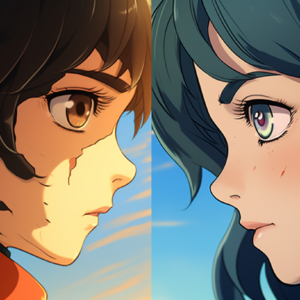

The transformation of anime from printed manga pages to vibrant screen animations has always been a topic of intrigue. With the surge of digital platforms, anime adaptations have gained significant momentum, making them the centerpiece of global entertainment. For instance, sites like Alltheragefaces.com have tracked and analyzed anime’s increasing popularity and influence across different cultures.
However, this evolution didn’t happen overnight. Over the decades, anime has undergone artistic and technological changes. Moreover, the audience’s reception to anime has played a pivotal role in shaping its current form. In today’s world, where digital platforms are all the rage, understanding the nuances of anime adaptations becomes even more essential.
The Humble Beginnings of Anime
Anime, as we know it today, originated from Japanese manga. Manga, essentially, are Japanese comic books or graphic novels. They have a rich history, tracing centuries, and have been an integral part of Japanese culture. However, with the advent of technology, creators realized the potential of bringing these static images to life.
From basic black-and-white animations to colorful epics, the journey has been miraculous. Moreover, as the demand for these animations grew, platforms like www.alltheragefaces.com emerged, offering fans a space to discuss and celebrate their favorite shows.
Technological Advancements and Anime
It’s undeniable that technology has been a game-changer for anime adaptations. In the early days, animators hand-drew each frame, which was labor-intensive. However, as technology evolved, so did the methods of animation. Computer-generated imagery (CGI) brought about a revolutionary change in the anime industry.
Using CGI, animators could create more detailed backgrounds, intricate character designs, and fluid movements. Moreover, this allowed for a faster production process, meaning fans didn’t have to wait as long for their favorite episodes.
The Global Influence of Anime
Technology made anime production more efficient and facilitated its spread globally. With the rise of the internet and streaming platforms, anime has reached audiences far beyond Japan’s borders. This globalization has not only increased anime’s fan base but has also influenced various cultures.
Today, you can find anime-inspired cafes, merchandise, and even festivals in countries worldwide. This cross-cultural influence has been a two-way street, with anime often integrating elements from different cultures into its narratives.
Audience Reception and Evolution
The audience’s role in the evolution of anime adaptations cannot be understated. As viewers’ preferences changed, so did the content of the anime. Genres like Isekai, which involve characters being transported to, reborn, or trapped in a parallel universe, have gained immense popularity in recent years.
Furthermore, the feedback loop created by fans and creators has been instrumental. Platforms where fans can express their views, discuss plot theories, or share fan-made content have ensured that the creators are in touch with their audience’s pulse. This dynamic relationship has made the anime industry more responsive and adaptive to changing tastes.
Conclusion: The Ever-evolving World of Anime
From its roots in manga to its global screen domination, anime has come a long way. Its journey, dotted with technological advancements and influenced by audience preferences, is a testament to its adaptability and enduring appeal.
As we continue to witness the rise of anime, imagining where this journey will take us next is exciting. One thing is for sure: the world of anime adaptations will continue to evolve, and fans worldwide will eagerly await its next transformation.
The post From Page to Screen: The Evolution of Anime Adaptations appeared first on Social Media Explorer.
* This article was originally published here
(” Learn How to Make Money With Affiliate Marketing – http://bit.ly/make_online_now “)
Comments are closed.